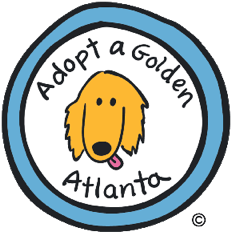Chances are your “Turkey Dog” spent time on his own on the street or in the wilderness. In either scenario a human approaching typically was not good news. In the Turkish culture ‘street dogs’ are not valued nor thought of as needing human attention or affection. Sadly, most dogs have learned to approach people only when necessary, for survival, not for petting and affection. They assess and choose carefully to avoid abuse, and hoping to be fed.
Because of this, your number one priority should be to establish his TRUST in you. This will take time, patience and consistency on your part. The dog needs to understand you are never a threat, you GIVE and DO NOT take away. You never threaten or punish. You do not ‘test’ him to see if you can come near his dish at meal time. You notice when a situation, person, activity bothers him and remove him or redirect him. You will never force him to do anything.
Leadership is a stressful role for people and it is just as true for dogs. The TD’s had to be leaders for survival. If you can gain trust, your dog will learn to rely on you, relinquish that stressful role and become a follower. Ideally, he will learn to ‘check-in’ with you (look at, sit by, seek you out) for reassurance that you’ve got the situation under control. Praise him greatly for a ‘check-in’. You are building trust!
Here are guidelines TO TAKE LITERALLY as you get to know your Turkey Dog:
- Do not approach the dog to pet or give affection. Let him come to you. Stand with your side toward him, vs full-on which is less threatening. Avoid bending over him which can crowd his comfort zone.
- If you need to direct him somewhere, do not collar grab. Keep the lead on him around the house to help him understand commands and what you want, as well as to keep him out of trouble.
- Once he comes to you do not pet over the dog’s head (a blind spot). He cannot see your hands and what they are about to do, so he will become defensive. Pet chest, neck and work up to ears, if they are not sensitive.
- Be aware of sensitive areas (feet are particularly common) and avoid handling those areas. Desensitization is a method to help with that, but HOLD OFF. Trust first!!!
- Try ONLY 2 pets at a time and remove hand. If he lingers, checks-in or nuzzles, do 2 more, and so on. Each time he walks away, start again with 2 pets.
- Only one person should pet the dog at a time. Too many hands will be interpreted as danger because he cannot keep track of what is going on. That may cause him to become defensive.
- Do not hug the dog—that is a show of human affection. To a dog a confining embrace is what a predator does to take them down. (Humping is another ’embrace’ dogs engage in to demonstrate dominance.) The dog may tolerate a hug, but he will not get the enjoyment we humans get from hugging our dogs. Instead he is likely to freeze, turn away or get defensive. The same applies to holding his head in both of your hands and putting your face in his (even for what you think is a harmless kiss.)
- Do not stare him straight in the eye or expect him to do the same. He is not avoiding you. Again, predators stare a dog down just before they attack. A side glance will help you work up to ‘regular’ eye contact.
- Never take anything away from the dog; even a toy or chew he is not paying attention to in his vicinity. Offer him an awesome treat–no dry biscuits for this— and gently take the item away. Practice this often with items of low value to him and work up to things that are more important to him. You are teaching that he gets something better than what he has and he will be less likely to guard resources.
Signs of escalating stress you may not be familiar with
Watch for other “subtle” signals that your dog is nearing his threshold for a situation: (Courtesy of Delightful Dog, Professional Playcare)
- CLOSED MOUTH. A happy dog has a loose open mouth, almost a ‘smile.’
- TURNING HEAD AWAY. Something in the environment needs adjusting. Stop what you are doing/remove dog from situation.
- LIP LICKING. This is compared to thumb sucking in children as being soothing.
- HALF MOON or WHALE EYE. Relaxed dogs do not typically show whites of eyes. If you see this consider it a warning to analyze and change something in the handling/environment.
- SHAKING OFF. (Like after a bath, but when dog is dry)This is a reaction to something stressful, sometimes after learning something new or when playing with another dog.
- YAWNING. If you know the dog is not tired, he is saying he needs a break. It is also a calming signal in dog/dog play that gets to be too much.
- BREATHING CHANGES. If it is not hot, a panting dog is stressed. Holding breath is another anxious signal.



